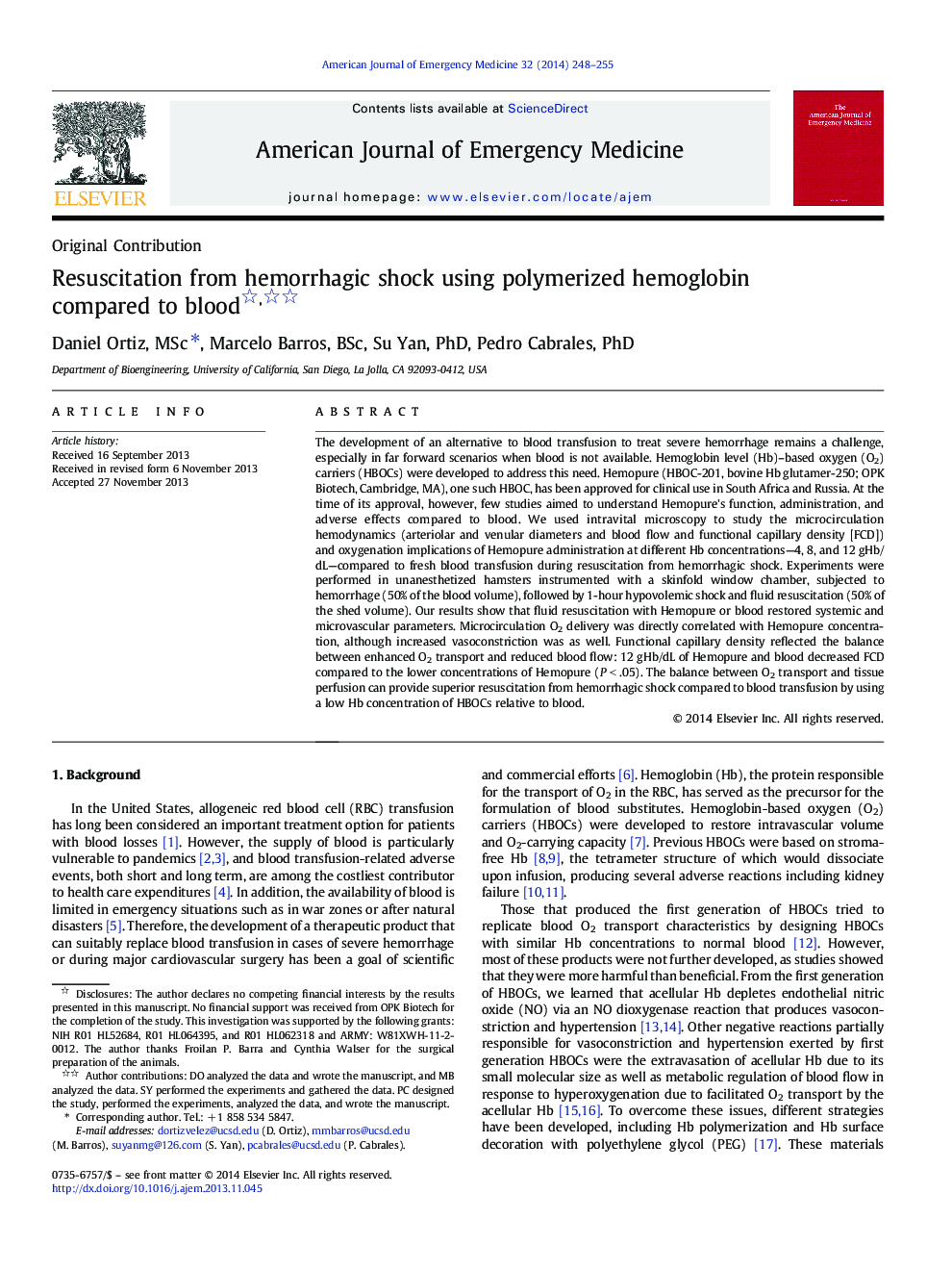| Article ID | Journal | Published Year | Pages | File Type |
|---|---|---|---|---|
| 3223974 | The American Journal of Emergency Medicine | 2014 | 8 Pages |
The development of an alternative to blood transfusion to treat severe hemorrhage remains a challenge, especially in far forward scenarios when blood is not available. Hemoglobin level (Hb)–based oxygen (O2) carriers (HBOCs) were developed to address this need. Hemopure (HBOC-201, bovine Hb glutamer-250; OPK Biotech, Cambridge, MA), one such HBOC, has been approved for clinical use in South Africa and Russia. At the time of its approval, however, few studies aimed to understand Hemopure's function, administration, and adverse effects compared to blood. We used intravital microscopy to study the microcirculation hemodynamics (arteriolar and venular diameters and blood flow and functional capillary density [FCD]) and oxygenation implications of Hemopure administration at different Hb concentrations—4, 8, and 12 gHb/dL—compared to fresh blood transfusion during resuscitation from hemorrhagic shock. Experiments were performed in unanesthetized hamsters instrumented with a skinfold window chamber, subjected to hemorrhage (50% of the blood volume), followed by 1-hour hypovolemic shock and fluid resuscitation (50% of the shed volume). Our results show that fluid resuscitation with Hemopure or blood restored systemic and microvascular parameters. Microcirculation O2 delivery was directly correlated with Hemopure concentration, although increased vasoconstriction was as well. Functional capillary density reflected the balance between enhanced O2 transport and reduced blood flow: 12 gHb/dL of Hemopure and blood decreased FCD compared to the lower concentrations of Hemopure (P < .05). The balance between O2 transport and tissue perfusion can provide superior resuscitation from hemorrhagic shock compared to blood transfusion by using a low Hb concentration of HBOCs relative to blood.
